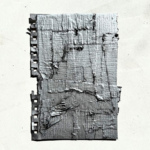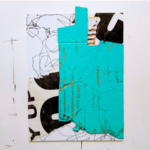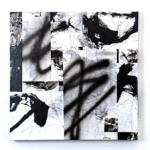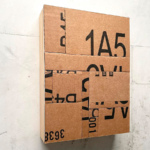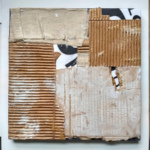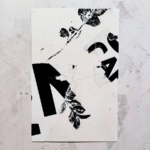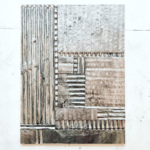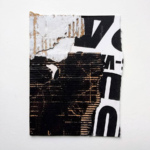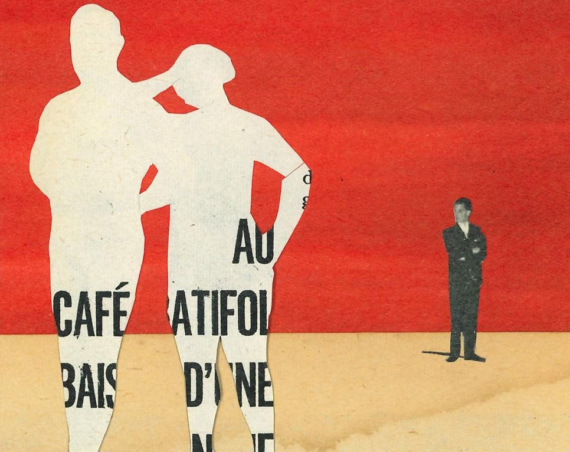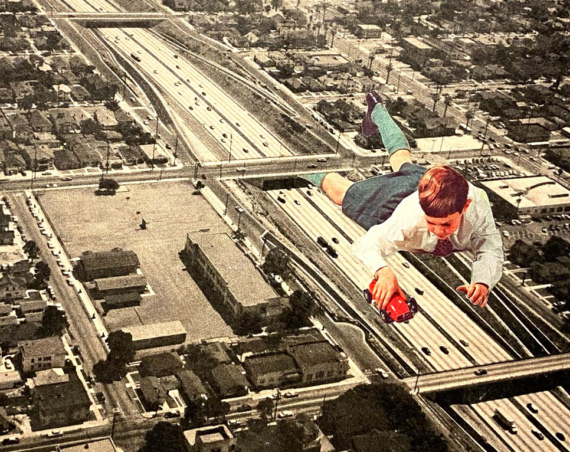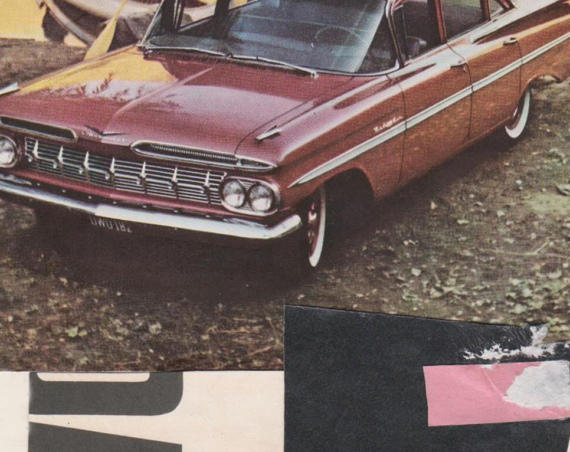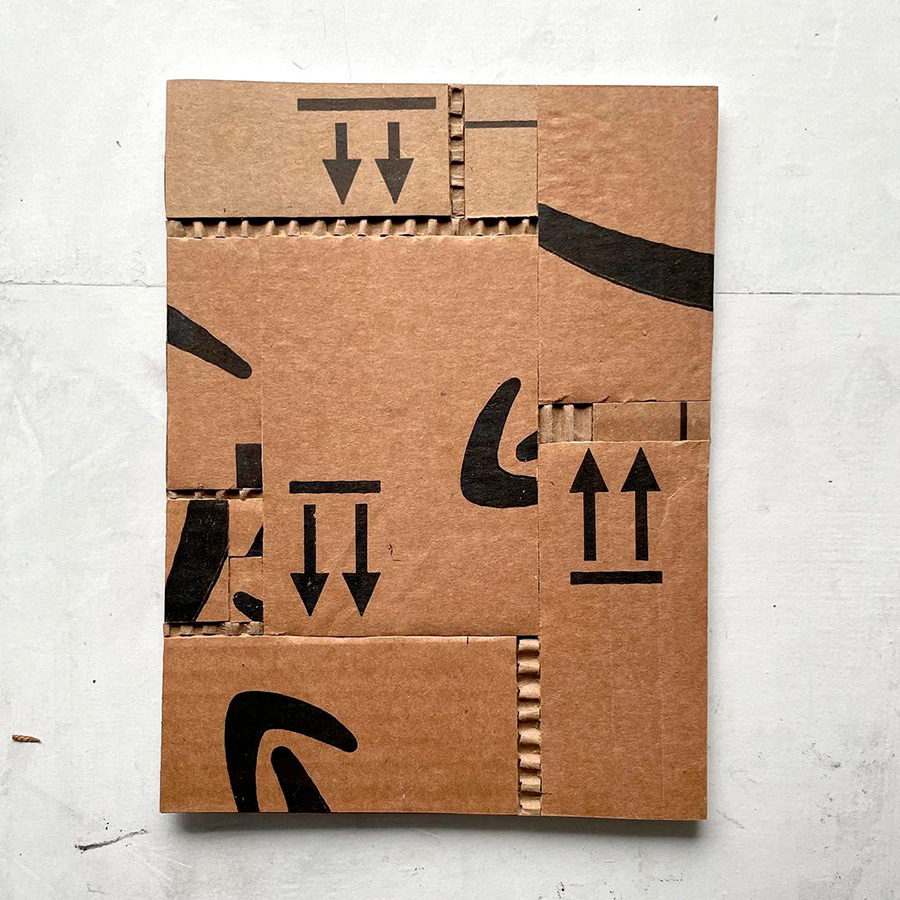
First few basic questions, who are you, what are you doing, where are you coming from?
My name is Barbara Ziselberger and I live and work in Maryland just outside Washington, DC. I like working with various types of paper and cardboard, acrylic paint, ink, and found materials. The last couple of years I’ve been doing more with collage. I am drawn to the things that go unnoticed and incorporate them into works that are quirky and hopeful.
You make abstract art from rather grunge materials, when you begin to work a new piece, do you have a clear vision of what you are going to do or where to start? And then how much your works ”live”/change from the original vision during the process?
I might have some initial ideas about materials to use or perhaps a color scheme, or a feeling, but that is about it. I often start with a shape or a fragment that interests me and then go from there–adding, subtracting, and moving pieces around until I get something that works compositionally. With the collage pieces, I prefer to lay all the bits out before gluing them down. Gluing introduces additional marks through accidental smears, smudges, and tears. I find these are the most interesting.
“I wanted to use materials with little or no intrinsic value that were not thought of as beautiful or interesting.”
Like said, your source materials are used/found objects and they are worn out or whatever, how much that visible story of the object means to you?
It started at the beginning of the lockdown as a personal challenge to try to make something beautiful or interesting out of materials close at hand. I chose cardboard because I had plenty of Amazon boxes laying around. I combined cardboard with old paper signs found on telephone poles in my neighborhood, fragments of failed paintings, and a cotton drop cloth. I wanted to use materials with little or no intrinsic value that were not thought of as beautiful or interesting. I also wanted to limit myself to these materials as a way of placing constraints on the work. I am interested in how these limitations force one to find more creative solutions. The cardboard and other materials were usually in fairly good condition. I wanted to give them a weathered “look” so I manipulated them with water, chalk pastels, gesso, and graphite. This process of “aging” the materials led me to delve more into themes around life and death which were already on my mind during the pandemic. Looking back, I think the work helped me to process some of the fear I was experiencing at the time.
What kind of connection there is between your message and the actual way you create your art?
That’s a great question! I find that the “whoops, oh no” marks turn out to be the most interesting. When working I try to stay loose because ultimately, I don’t want it to be “perfect”. I want to be open to allow the unexpected and to celebrate the outcome. I like smudges and smears in other artists’ work because I like to see traces of the artist’s hand. It reminds me that someone labored over the work. I think the way I work as well as the materials I chose prompted me to explore ideas around impermanence and imperfection, life and death, the aging process, and how we define beauty. And although I may be thinking about these things while making the work or afterward, I don’t always set out to have a message. Sometimes it is just about providing a visual experience for the viewer.
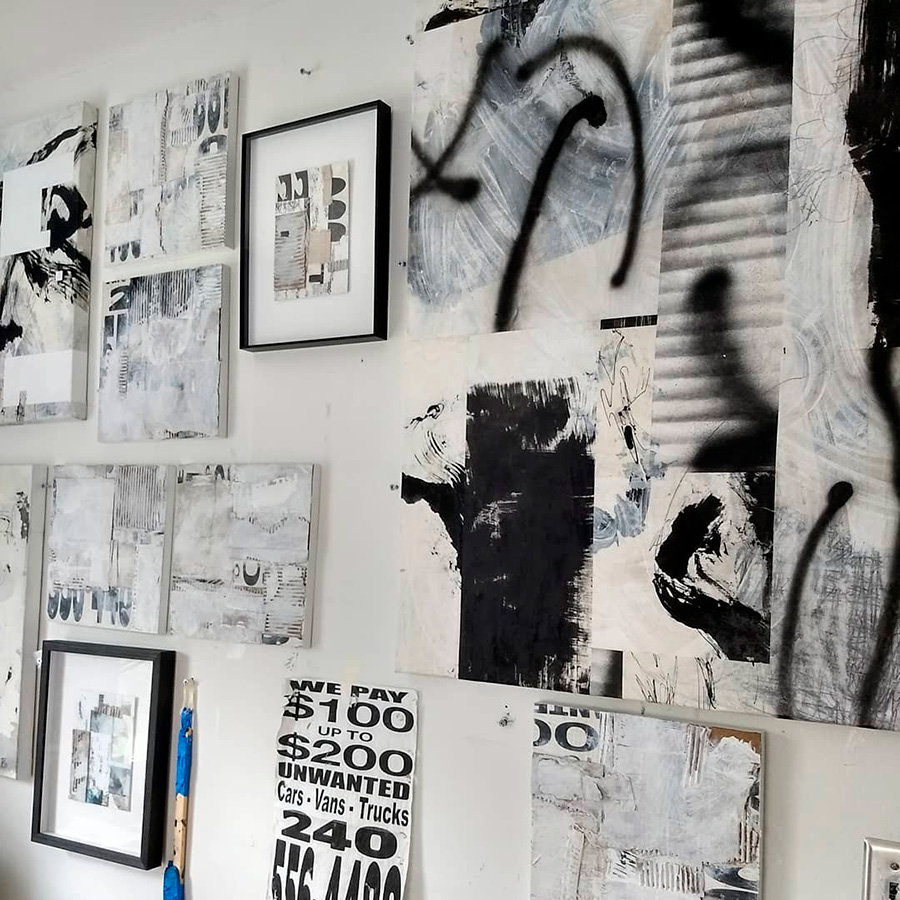
How do you boost your creativity? Do you have creative rituals?
No rituals, but I try to make time for play. Some folks call it a low-stakes creative outlet. It’s a way for me to experiment with and explore new techniques and materials without worrying about the cost or preciousness of the materials. It allows me the freedom to push beyond my comfort zone, make mistakes, have fun, and perhaps discover something. Cardboard and other discarded items are wonderful materials for that process.
While you’re working on artwork, when do you know it’s ready?
It’s ready when it can stand on its own and when I have nothing more to add. One of my favorite quotes about this is by Rita Ackerman. When asked this question, she responded “When it walks out from the studio on its own feet, stops at the bar around the corner, and orders itself a vodka martini. That’s how I know it is finished.”
How do your art and art-making impact other parts of your life?
I often find that I am looking outward for inspiration and inward for answers. I see something that sparks an idea. And then I might follow that thought, feeling or intention through a series of works. Later, I try to understand what they’re about, why I made the series, and what memories and experiences informed the work.
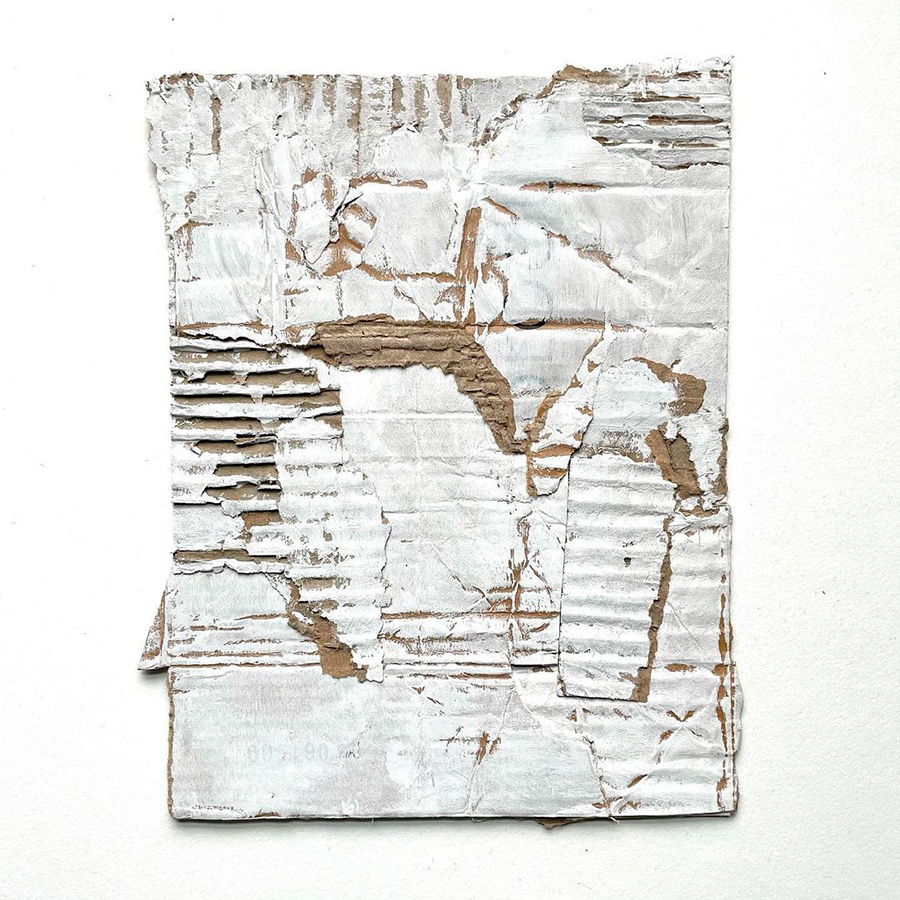
When you are not actually doing artworks in your workspace/studio, how much do you process your works in your mind?
When I’m away from the work I tend to do the internal processing—trying to work out why I made the work, what it means to me, and ultimately what it’s about.
If you compare your very first works to your very latest ones, what is the biggest difference? What has changed?
I think the biggest difference is my transition from representational to more abstract. I wanted to change from making paintings of recognizable images to making works that represent ideas and emotions. I am drawn to artworks that tend to be more ambiguous.
If you should describe your art with one word, what would it be?
Raw.
Barbara Ziselberger around the internet
Website: barbaraziselberger.com
Instagram: @barbaraziselberger

